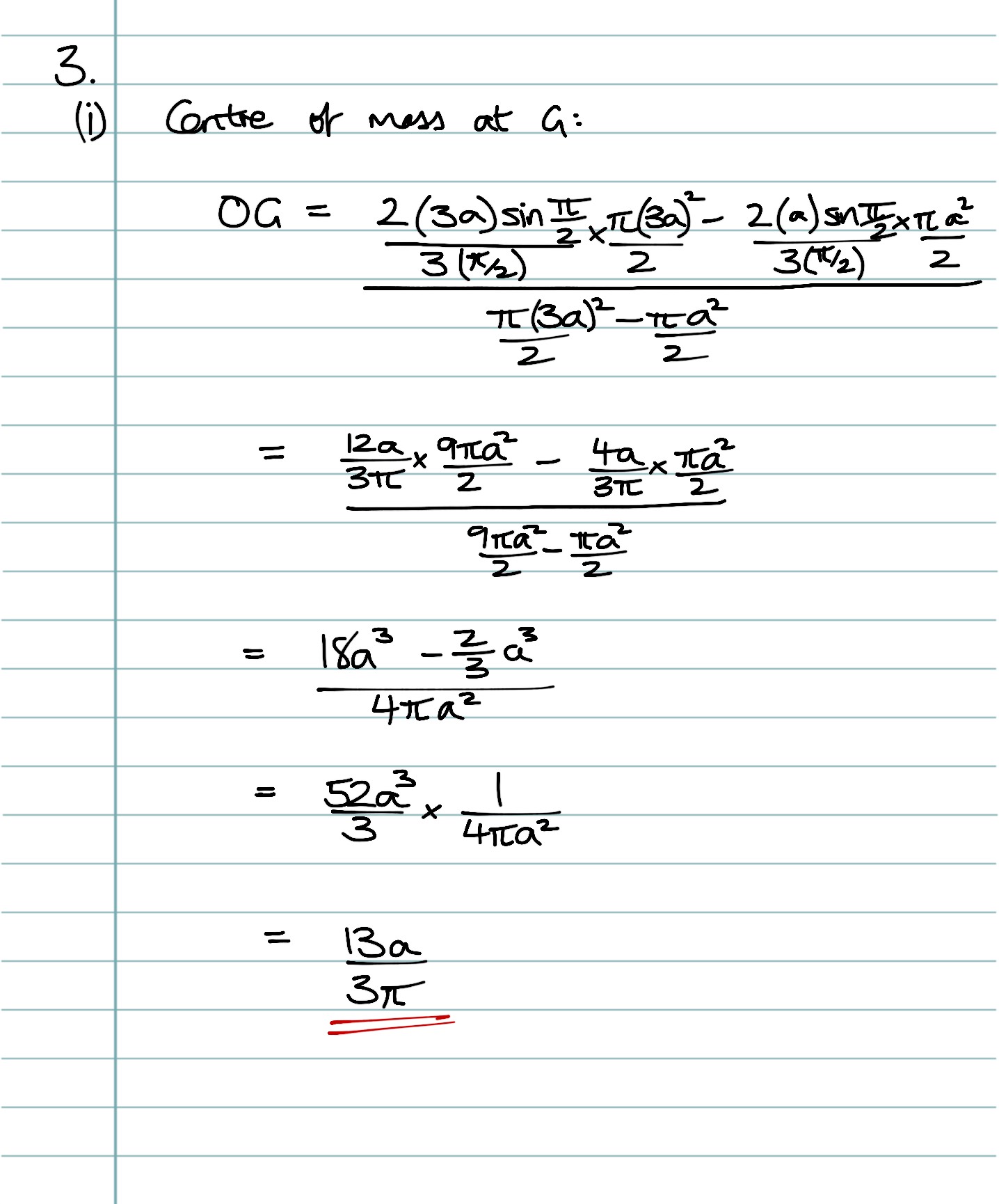





























One of the most fundamental concepts within mechanics is that of equilibrium. An object is in equilibrium when the net force (and moment) acting upon it is zero. In M1 we only need to work with equilibrium of forces.
When there is zero net force on an object the object will not accelerate or change direction but will continue to move in a straight line with constant velocity or remain at rest.
Resultant forces are used to find the net force at a point. This will enable you to check whether or not a particle is in equilibrium.
Whilst it can be useful to express the equation of a line in its vector form , it is also important that we are able to describe the line in a cartesian form, without the parameter t.
The expansion of the vector form gives the following general equation:
If we rearrange these three equations for t we get:
Setting all these equal, as t is common to the equations, we get the following:
You should already be familiar with the equation of a straight line in a 2D plane as being . This section takes that work a step further. It allows us to express the equation of a straight line in 3D space in a similar format.
Take a straight line through the point A with direction vector . R is another point on that line. The position vector (from an arbitrary origin) of A is
, and of R is
. The vector
is a multiple,
, of
.
It follows that the position of a point R on the line is given by:
2 July 2013, Created with GeoGebra
Force is a vector quantity. This means it has a magnitude (size) and a direction. Force is measured in Newtons (N). Figure 1 shows a 7 N force acting at 45° above the horizontal.
Figure 1
Mechanics 1 has only 5 strands that you need to learn:
You are also expected to know the content of C1 and C2.
Continue reading
Unfortunately when you do experiments it is unusual to find that the relationship you are studying is linear. Linear relationships are nice because you can plot them, draw a line of best fit, and use to find an empirical equation to model the behaviour of the experiment in question.
More commonly you will need to deal with non-linear relationships. In C2 you can model curves of the form and
. Examples of these forms of graph are shown below:


It is important to be able to describe the general shape of distributions in order to make quick comparisons.
There are three different basic shapes of distribution. The shape can be seen if you draw a histogram or bar chart of the data and look at the general shape that the area covered by bars covers. The three shapes are:

Figure 1: A unimodal distribution has roughly this shape.

Figure 2: A uniform distribution has roughly this shape.

Figure 3: A bimodal distribution has roughly this shape.
The general form of a quadratic polynomial is . It is a polynomial of order 2. This means that the highest power of [pmath]x[/pmath] is 2.
When the quadratic polynomial is set equal to 0 you get a quadratic equation: [pmath]ax^2 + bx + c = 0[/pmath]. There are three ways to solve this form of equation algebraically:
These are discussed separately on the following pages.
Float is a measure of the amount of ‘spare’ time that is available in addition to the time required to perform a given activity.
There are three different types of float:
Total float is the maximum length of time available to extend or delay an activity without causing following activities to be delayed. The total float for an activity is calculated as follows:
total float = latest end time – earliest start time – duration
Independent float is the amount of spare time that is only available to one activity. If the spare time available to one activity could also be used for another activity then it is not independent.
independent float = earliest end time – latest start time – duration
interference float = total float – independent float